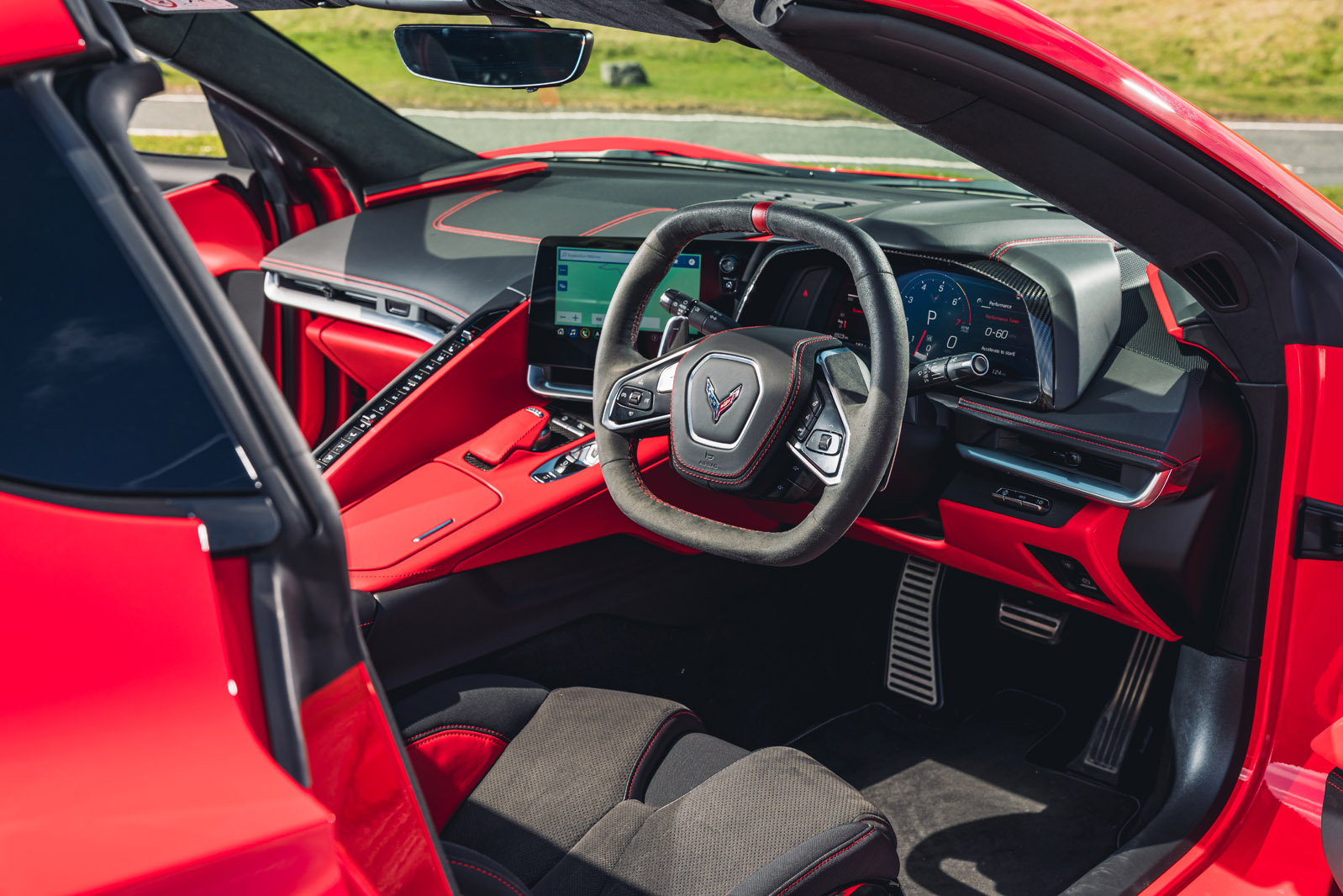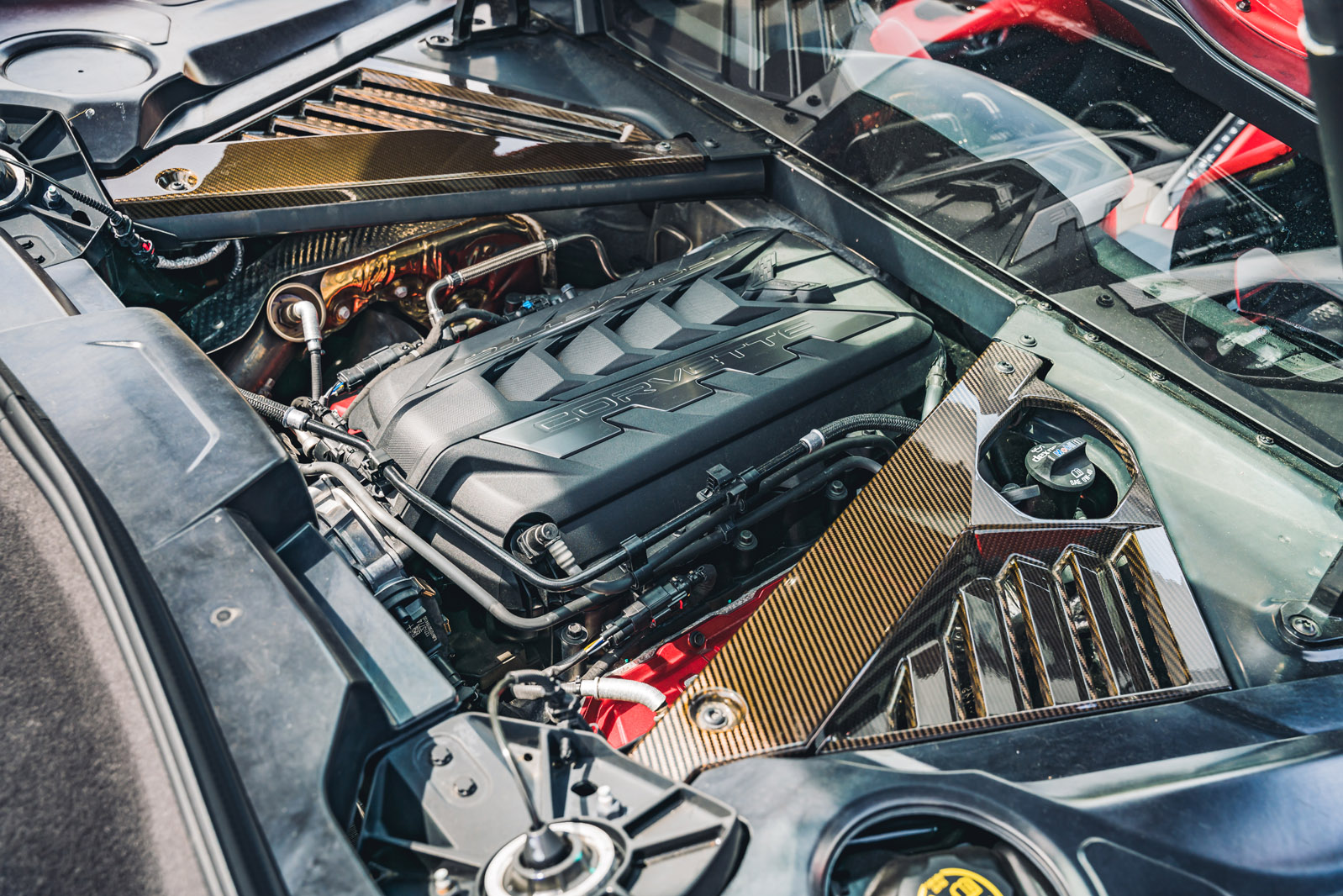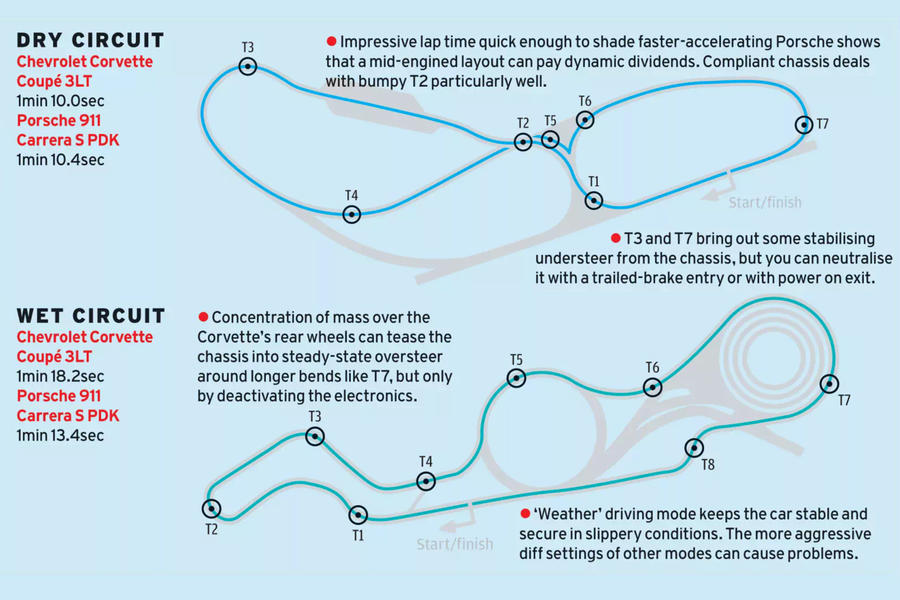Like predecessors, the car is a strict two-seater. Unlike many of them, which offered some open and accessible storage space behind the seats, the C8 Corvette’s engine placement puts paid to that. This doesn’t make it short on luggage space, however. There’s 356 litres of carrying space, split between a compartment in the nose and a larger one at the rear.
Long-standing Corvette owners will be used to even more cargo space, but even compared with a Porsche 911 or Porsche 718 Cayman, this Corvette seems quite a versatile and usable sports car for daily driving and touring.
The primary ergonomics do betray a certain lack of experience with mid-engined packaging. Several designs of seat are offered. Our Competition Sport seats had fairly thick cushioning and plenty of lateral support, but slimmer-padded GT1- and GT2-spec chairs are available for a slightly comfier and easier slide in and out of the car. If they allow you to sit any lower at the wheel, the other seats might be worth having, because our car’s driving position was about 2in higher than is ideal, limiting head room a little and bringing the header rail into the forward field of vision.
The wider cabin layout tells you much about the underlying structure of the Corvette in amiably transparent fashion. You have a high-rising centre tunnel that looks like it should have a backbone and driveshaft within it (even though it clearly no longer has the latter), with a line of quite small physical ventilation control buttons running along its ridge, and space adjacent for drinks-holders, a rotary drive mode controller and some good-sized, easy-to-find transmission controls.
Chevrolet’s standards on material richness and presentation are quite high. If you have a 3LT car like ours, you get a leather-wrapped dashboard and door panels and a microfibre suede headlining, which look and feel fairly lavish and upmarket. The secondary controls, meanwhile, mostly look and feel solid too.
Infotainment

There’s no difference between Chevrolet’s UK-market trim levels as regards infotainment specification: both versions of the car get an 8.0in touchscreen display with voice recognition, 14-speaker Bose audio, wireless smartphone mirroring and wireless device charging as standard.
It’s an all-touchscreen system with no separate input device, but it sits at a point at the junction of the fascia and centre console that’s within a comfortable stretch of your left arm without needing you to lean forwards.
It has a physical volume knob and home buttons, which help you to navigate the system, too. And while it’s not the most graphically ambitious or feature-rich set-up, it’s nicely presented and easy to use.
The Bose audio system has plenty of power and good reproduction quality, and during our test connected consistently and reliably with an Apple smartphone for music streaming.
































































